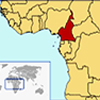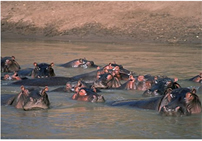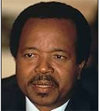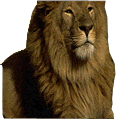|
![]() | videos| Site Map | Policy | Contact us |
| videos| Site Map | Policy | Contact us |
- Culture
- Music
- sports
- Politics
- Geography
- Tourism Potentials
- Environment
- Relief/climate
- Risks/disasters
- Activities
- Economy
- Transport
- Hotels
- Others
- Education
- Towns/provinces
- Languages
- Community
- Forums & discussions
- Videos About us

Cameroon
is located in Central Africa, at the Bight of Biafra and precisely
between latitudes 2° and 12° North and longitudes 3°and 16° east. It
shares boundaries with Tchad to the north, Nigeria to the West,
Equatorial Guinea, Gabon and Congo to the south and Central Africa
Republic to the East.
The location of Cameroon within this range
lends it to diverse climatic and ecological regions, with a very humid
south towards a dry and almost desert north. Such contrast in
characteristics has made most researchers to refer to it as 'Africa in
miniature'. It is Africa in miniature in the sense that almost every
climatic and ecological zone found in Africa can be found in Cameroon.
Another perspective is that Cameroon has a diverse ethnic and
linguistic background. Cameroon presents all the tropical climatic
nuances: from the tropical cool type, to the tropical hot and wet, and
tropical hot and dry with accompanying vegetation and animal life.
The capital of Cameroon is Yaoundé, located between latitude 3°52′N
11°31′E and longitude 3.867, 11.517. The largest city in Cameroon is
Douala and it is equally the economic capital. It has a surface area of
475, 442 km sq Km and a population estimated in July 2005 at 17 795 000
inhabitants and a population density of 37 inhabitants per sq km or in
other words 97 inhabitants per sq mile. It gained its independence from
France and Britain on 1st January 1960 and 1st October 1961

Hippos at the Benue National Park
Several tourist sites exist through out the national territory such as
game reserves, parks, mountains, lakes etc. Alongside this potential,
services are being offered through hotels and tourism agencies. more>>>>
Cameroon is divided into ten administrative regions initially refered to as provinces. Each one has a headquarter which is most often the principal town of the region>>>
 Cameroon since after independence has known two Presidents: Paul Biya and former President Amadou Ahidjo. The former took over power in 1982. more>>>>>
Cameroon since after independence has known two Presidents: Paul Biya and former President Amadou Ahidjo. The former took over power in 1982. more>>>>>

Oudijila Village in the North
Besides the natural landscape , other human features like monuments, village communities, handicratf centres, traditional festive activities etc make Cameroon an ideal destination. read more>>>
French and English are the official languages spoken in Cameroon. However, there are over 253 local languages. This is as a result of the great diversity in ethnic groups found through out the country. These languages fall under three main families: Afro-Asian, Nilo-Saharan and Niger-Kordofan.
Contemporary languages are also indicators of migratory trends that occured in the past through out Africa before final settlement in todays locations. Read more>>>
Climate
Cameroon stretches from about latitude 2 to 12 degrees north, making it cut across diverse climatic regions. The south is typically equatorial meanwhile the North is Sahel.
The contrasting nature of the climate is further influenced by the sea and relief; creating micro climates in some regions. Some regions also tend to be characterised by extreme climates due to sporadic contrasts in relief. Read more>>>
Music
The diverse ethnic background in Cameroon partly explains the diversity of brands of music. Influence from the west is also sweeping across cultures with brands like pop, rap, salsa amongst others. The most popular music brands in Cameroon are Mabossa, Bekutsi, patchanga and Assiko. There are other very traditional forms of music. More >>>
Football and sports
Most people hearing the name Cameroon think first about football. This is the first African nation to have reached the quarter finals of the Wolrd cup in 1990. Its history has often been marked by prolific football names like Roger Miller; African Player of the Century, Samuel Eto Fils amongst many others. There is a rich profile in many footbal competitions and the future still reserves surprises. More>>>
To advertise on this site please contact us 
Copyright © 2009 www.cameroon-tour.com| All Rights Reserved
Authors Mphoweh jude Nzembayie and Futonge Nzemabyie Kisito

